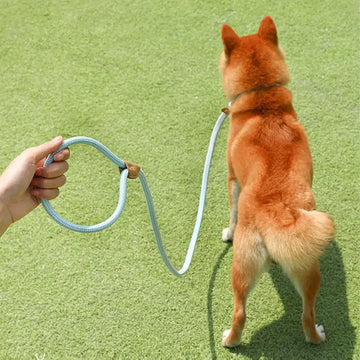Shock collars, also known as electronic collars or e-collars, are devices designed to provide electrical stimulation to a dog’s neck as a form of correction for undesirable behaviors. While they have been a controversial tool for training, their usage raises ethical, practical, and welfare-related concerns. Many experts, animal behaviorists, and dog owners have debated whether shock collars are harmful or beneficial. In recent years, an increasing number of individuals and professionals argue against their use due to the negative physical and psychological effects they may have on dogs.
The Basics of Shock Collars
Shock collars work by delivering an electric pulse to a dog's neck when activated. They are typically used to prevent behaviors such as excessive barking, running away, aggression, or other unwanted actions. The intensity of the shocks can often be adjusted, and some collars even offer vibration or sound options as alternatives. While proponents claim these devices can be effective tools for training when used responsibly, the primary issue revolves around the aversive nature of the correction.
Instead of resorting to shock collars, many dog owners and trainers have shifted to safer alternatives available in pet supplies stores. Options such as positive training tools, gentle leaders, or no-pull harnesses can help manage a dog's behavior without causing discomfort.
The Negative Effects of Shock Collars
One of the strongest arguments against shock collars is their potential to cause harm. Studies have demonstrated that dogs can experience stress, fear, and anxiety when subjected to electric shocks. These emotional states not only degrade a dog's quality of life but also hinder their ability to learn in a positive and healthy way. For instance, when a dog receives a shock, it may not always associate the correction with its behavior but instead link it to the surrounding environment, people, or other animals. This can lead to confusion, increased anxiety, and even aggression.
Additionally, the physical impact of shock collars cannot be overlooked. If used improperly, these devices can cause burns, irritation, or pain to a dog's sensitive skin. Even on low settings, the electric stimulation can be unpleasant and frightening, particularly for sensitive breeds or young dogs. Safer tools like the best dog leashes or training harnesses offer a more humane way to guide and control a dog during walks or training sessions.
Impact on Dog-Human Relationships
Using shock collars can erode the trust and bond between dogs and their owners. Dogs thrive on positive reinforcement, love, and understanding. When a shock collar is employed, the dog may view its owner as a source of discomfort or punishment rather than a caregiver. Over time, this can create fear-based responses, damaging the relationship. Training a dog should focus on clear communication, trust, and encouragement—elements that shock collars undermine.
Are Shock Collars Effective?
While shock collars might achieve short-term results, they are often not sustainable or reliable in the long run. Dogs trained with aversive methods tend to suppress their behavior rather than truly learn an appropriate alternative. This suppression can be dangerous, as the underlying behavioral issue remains unresolved and may resurface in a more problematic way. Positive reinforcement techniques, such as rewarding desired behaviors with treats, praise, or toys, are far more effective in creating lasting behavioral changes.
Studies have shown that dogs trained using reward-based methods are not only happier and healthier but also perform better than those trained with punishment. Positive training methods focus on encouraging the dog to repeat good behaviors rather than punishing mistakes, which fosters a cooperative and enjoyable learning experience.
The Ethical Debate Surrounding Shock Collars
The ethical implications of using shock collars cannot be ignored. Many animal welfare organizations, including the Humane Society and the Royal Society for the Prevention of Cruelty to Animals (RSPCA), condemn the use of shock collars. They argue that animals should not endure physical or emotional distress as part of their training. Countries like Germany, Sweden, and parts of Australia have even banned the use of shock collars, reflecting a growing global recognition of the importance of humane training practices.
Instead of relying on painful methods, modern pet owners are encouraged to explore options like dog harnesses, which provide gentle control and support without causing harm. Such tools, when paired with positive reinforcement, contribute to effective and stress-free training.
Alternatives to Shock Collars
There are numerous humane alternatives to shock collars that are equally, if not more, effective. Some options include:
- Positive Reinforcement Training: Rewarding good behavior with treats, praise, or toys encourages dogs to repeat desired actions.
- Clicker Training: A clicker device signals to the dog that they have performed a correct behavior, followed by a reward.
- Vibration or Tone Collars: These collars use vibrations or sounds as signals without causing pain.
- Professional Training Classes: Enrolling dogs in obedience classes led by qualified trainers can address behavioral issues without the use of aversive tools.
- Behavioral Therapy: For dogs with severe issues, consulting an animal behaviorist can provide personalized, positive strategies for improvement.
Conclusion
At the end of the day, our dogs are not just pets—they’re family. They look to us for love, guidance, and protection, and it’s our responsibility to treat them with kindness and respect. While shock collars might seem like a quick fix, they come with risks that just aren’t worth taking. Instead, using positive reinforcement and humane tools like dog harnesses and the best dog leashes can make training a more enjoyable and rewarding experience for both you and your dog.
Your dog wants to make you happy, and with a little patience, love, and understanding, you can build an unshakable bond based on trust, not fear. After all, training should bring you closer together, not push you apart. So, put away the shock collar, grab some treats, and enjoy the journey of raising a happy, confident, and well-behaved dog. They’ll thank you with tail wags, wet kisses, and loyalty that lasts a lifetime.










